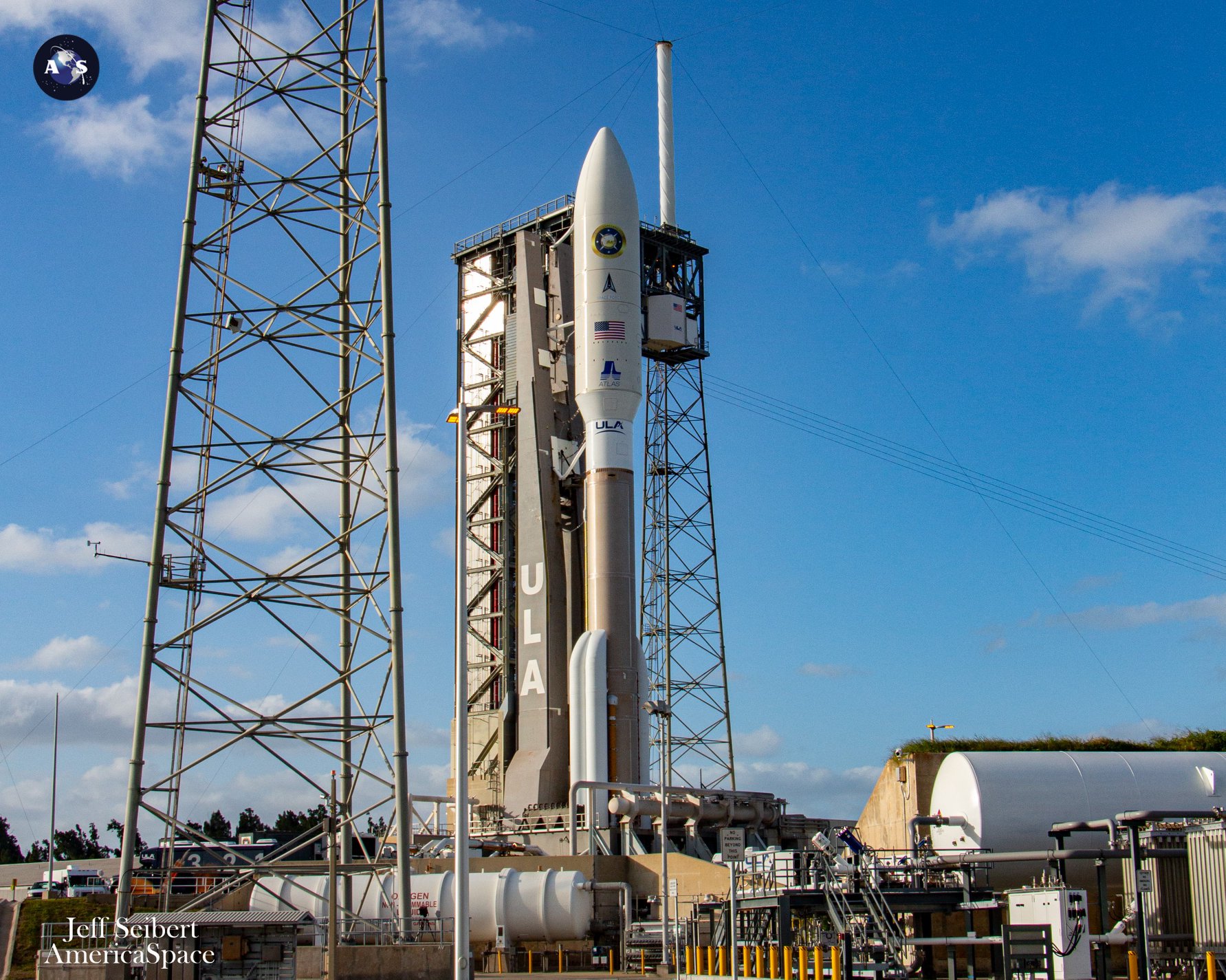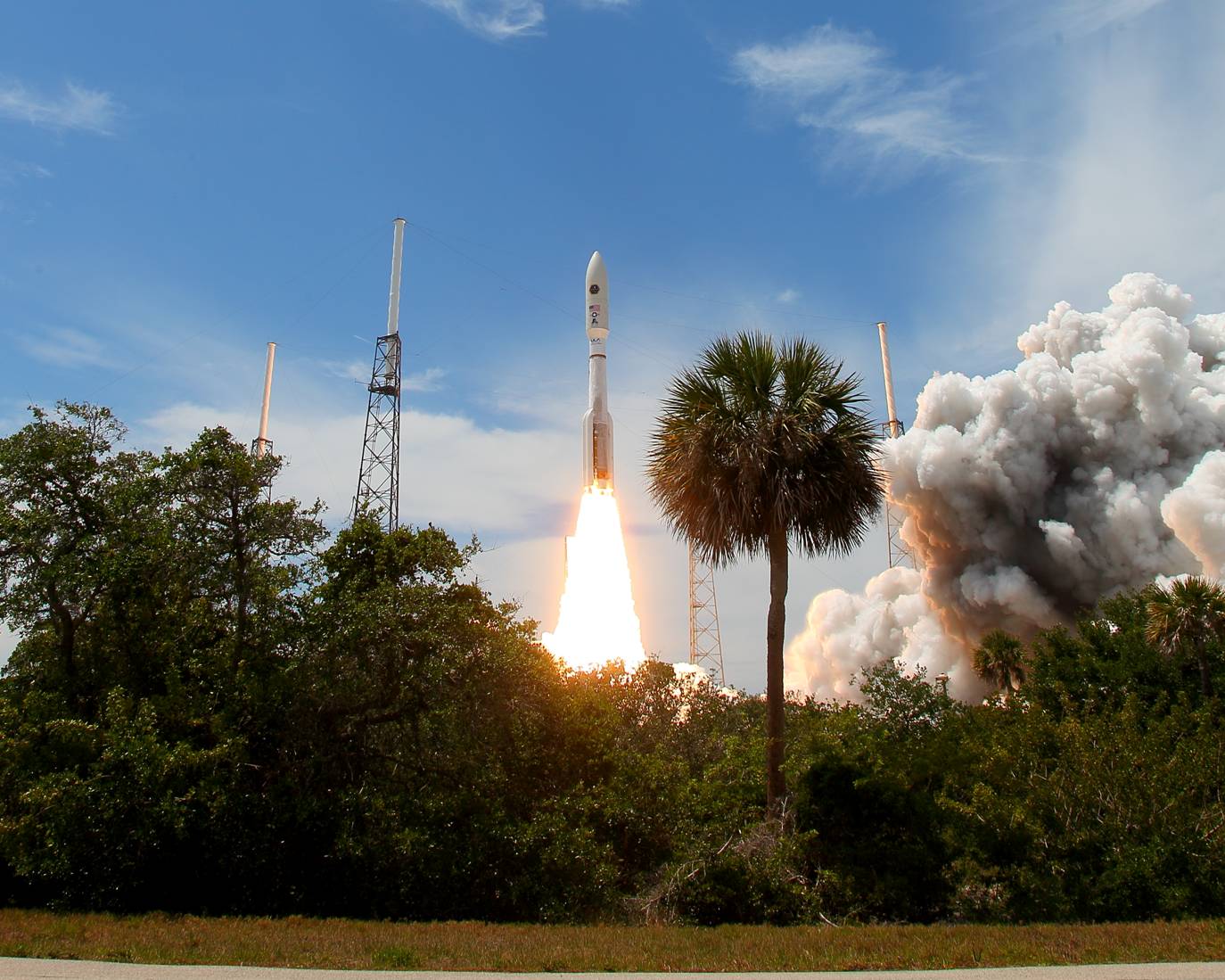
ULA and their Atlas V rocket with its classified NROL-101 payload onboard will wait at least a few more days before another launch attempt, as the company has moved the booster off its launch pad and back inside its nearby 300 ft tall Vertical Integration Facility (VIF) to wait out Tropical Depression Eta.
Liftoff from Cape Canaveral Air Force Station, Fla is now scheduled for Wed., Nov. 11, at 5:22 p.m. EST. A previous issue which scrubbed a launch attempt earlier in the week has now been resolved as well, says ULA.
As detailed in AmericaSpace’s NROL-101 preview article by Ben Evans, virtually nothing of substance has trickled into the public domain about the nature of the payload. However, its presence atop the Atlas V in its infrequently-used “531” configuration—equipped with a 17-foot-diameter (5-meter) payload fairing, three solid-fueled boosters and a single-engine Centaur upper stage—does offer an indicator of its possible size, mass, orbital destination or energy requirements.
The 531 has only been used three times, delivering the first three Advanced Extremely High Frequency (AEHF) military communications satellites in August 2010, May 2012 and most recently September 2013. Nicknamed “The Thunderer”, the 531 has the capability to lift 34,350 pounds (15,575 kg) to low-Earth orbit and 16,480 pounds (7,475 kg) to Geostationary Transfer Orbit.
Originally targeting a sunset liftoff on 3 November, the Atlas V was rolled out to the pad on Monday. And while it reached the pad without incident, strong winds from the north were of concern, with gusts topping over 40 mph.

Those concerns were realized, when a flow-rate reduction was noted in the payload’s Environmental Control System (ECS), which prompted an almost immediate rollback to the VIF. “Platforms in the VIF enabled technicians to reach this area at the top of the rocket,” ULA subsequently noted on its website, “which is inaccessible at the launch pad.”
The issue was resolved swiftly, and the Atlas V was returned to the pad for a launch attempt Wed, Nov 4. Weather conditions were predicted to be 70%-favorable, and countdown operations began without incident at T-6 hours and 20 minutes. The Atlas and Centaur systems were respectively powered-up and launch teams proceeded through an intricate sequence of testing of the vehicle and a GO was given to begin fueling.
That’s when a ground valve issue emerged with the first-stage liquid oxygen system, prompting a halt to the countdown for ULA to troubleshoot the problem. Engineers were sent out to examine hardware in the Atlas V’s liquid oxygen storage area, but at 5:54 p.m. EST—by happenstance the exact time of scheduled lift-off—Mission Director Col. Chad Davis formally called a scrub.
ULA Launch Director Tom Heter III relayed the call to his team, as the process of reconfiguring the vehicle got underway for a 48-hour turnaround. In a subsequent update, it was noted that “an unexpected system response from remotely-commanded ground system liquid oxygen valves” was the culprit behind Wednesday’s scrub. “Almost there, but ran out of time,” tweeted Mr. Bruno. “We will be back in 48 hours.”
And now, Tropical Depression Eta is churning to the S SW, and expected to impact Florida for several days.
.
.
FOLLOW AmericaSpace on Facebook and Twitter!
.
.





